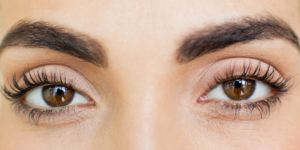
An essential strategy for managing type 2 diabetes is eating a nutritious, well-balanced diet. A diabetic patient can better control the hazards connected with their condition by eating a healthy diet. You are responsible for managing your diabetes; you may take good care of yourself by controlling your diet, including what, how much, and when you consume. Choosing nutrient-dense foods, limiting daily meals, and being aware of carbohydrate intake can all have a significant impact on treating Type 2 diabetes. Diabetics can benefit from eating well and avoiding harmful foods in the following ways: feel good every day, reduce weight if necessary, and reduce your risk of developing diabetes-related consequences like heart disease, stroke, and other issues Eating a healthy diet aids in keeping blood sugar (blood glucose) within the desired range.
Physical activity and medications can help control your diabetes in the best possible way. The targeted blood glucose range is the level suggested by health care specialists for good health. One can help prevent health complications by keeping your blood glucose levels at a target range. How can you keep blood glucose levels on target? You can keep your blood sugar under targeted levels by:
- Making good food choices
- Being physically active
- Taking diabetes medicines if required
For some people with diabetes, taking certain diabetes medicines and following a schedule for meals, snacks, and physical activity is best. However, some medicines for diabetes allow for more flexibility. Check with your health care specialist to create a diabetes plan that is suitable for you. He will guide you to know how many meals and snacks you should eat each day. If prescribed medication, you can buy diabetes medicines online to improve your blood glucose level. Choosing good food for diabetics can help you lower blood sugar and keep it stable. Let’s find out what to put on the menu when planning your diabetes diet. Every one of us knows that vegetables are healthier than cookies. But there are also good food choices within each food group. Good foods for diabetics often include trans-fat, saturated fat, added sugar, and sodium than similar foods. Starches Your body needs carbohydrates, but it is important to make a smart choice. Best choices
- Baked sweet potato
- Whole grains such as oatmeal, millet, brown rice, quinoa, or amaranth (amaranthus)
- Items made with whole grains and no added sugar
Worst choices
- French fries
- Cereals with little whole grains but a lot of sugar
- White bread
- Processed grains, which include white rice, or white flour
- fried white flour tortillas
Veggies As you fill your plate, add more and more lush green veggies. Recall that carbohydrates include potatoes and corn. Best selections Just frozen veggies that have been gently steamed Reduced-sodium or unsalted vegetables in cans green vegetables, such spinach, kale, and arugula. Iceberg lettuce should be avoided due to its low nutritious content. Raw, mildly steamed, grilled, roasted, or sautéed fresh vegetables Choose a selection of vibrant veggies, such as purple eggplant, orange carrots, red peppers, and white onions. Worst decisions
vegetables that have had a lot of butter, sauce, or cheese added to them
Eat less pickles if you have high blood pressure.
veggies in cans with extra salt
If you must restrict sodium, try sauerkraut.
Fruits Fruits are a good source of fiber, carbs, minerals, and vitamins. The majority of fruits are low in fat and salt by nature. However, their carbohydrate content usually doesn’t surpass that of vegetables. Best selections sugar-free preserves or jam fresh fruit Fruit from frozen planes without additional sugar Without added sugar applesauce Worst decisions Soft fruit buns Fruit canned in a thick sugar syrup applesauce with added sugar Normal jams and jellies Complete Protein There are several options available to you when it comes to protein, such as fish, pork, beans, eggs, almonds, turkey, cattle, chicken, and tofu. Best selections
- Fish and seafood
- Eggs and low-fat dairy
- Plant-based proteins such as seeds, nuts, beans, or tofu
- Chicken and other poultry
- Make sure you choose low-fat meat. Ask the vendor to trim the skin off.
Worst choices
- Deep-fried or tofu
- Pork bacon
- Regular cheese
- Poultry with skin
- Higher-fat cuts of meat such as ribs
- Beans prepared with lard
Dairy Pick low fat or keep your portion small. Best choices
- Low-fat cottage cheese
- 1% of skim milk
- Low-fat or non-fat sour cream
- Low-fat cottage cheese
- Low-fat yogurt
Worst choices
- Regular ice cream
- Whole milk
- Regular sour cream
- Regular yogurt
In addition to this, it might be difficult to avoid fats, oils, and sweets; diabetics should avoid these foods because they can cause weight gain and make managing their condition more difficult. Conclusion The foods you choose to eat do matter. Eating nutrient-dense foods, low-fat dairy products, and fresh fruits and vegetables are all good diabetic foods that can help control diabetes. Bad foods for diabetes include fried foods, salted foods, frozen fruits with added sugar, and high-fat dairy items. Meal timing and content can impact the efficacy of diabetic medications. Talk to your doctor about the best times to take your medications. Purchase affordable diabetes medications online to save money.




